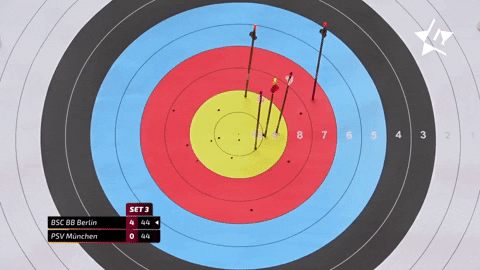Today I’d like to discuss an excellent trading setup that occurred on Friday in Support.com INC. This was a classic short squeeze. There was a relatively low float of 15.08million shares as per Finviz.com, with almost 41% of those shares short.
Stocks with these characteristics (low float and high short interest) can have major moves to the upside to wipe out stubborn shorts before falling back to reality. And that is exactly what we saw: an almost 300% move in 2 days followed by a 55% sell-off in 3 hours.
But what to do when there are no shares available to short at your broker due to the high demand? If the stock has tradeable options, you can take a position using call options.
First, let’s run through how the setup occurred and then how we could have structured the trade.
Daily Chart of SPRT
Setting Up The Squeeze
Taking a look at the daily chart, there are a few things that we notice that made a short squeeze possible. On the 13th of August 2021, we saw SPRT gap up and make a 52 week high on volume of 83.5 million shares traded. After opening at $9.77, making a high of $10.88 the stock was unable to hold gains for new investors buying on this day, closing at $8.10.
Now the stock traded more than 5 times its 15.08 million share float. This usually occurs when algos buy and sell to each other to create liquidity to exit a stock. This type of volume at the highs is sometimes known as a liquidity event, where insiders can cash out of their positions. And when it fails on volume, it can also mark a blow-off top, in which case a stock should steadily sell off back to where the move started. However, this did not happen, and when new shorts pile into a stock with an already high short interest, fireworks can ensue.
After a stock has a liquidity event, as we stated earlier, it should sell off in the coming days. Instead, SPRT consolidated for 4 days around the $7.50 to $8 area right at the 13 days moving average. From a technical analysis standpoint, it was still trending higher, making a higher low. The stock failed to sell off and continue lower on numerous occasions i.e. after 20th, 24th, and 25th of August. On each of these occasions, if it was a weak stock, it “should have died,” it did not.
As we can see, there were sustained increases in volume day by day and finally, when SPRT could not continue to sell off after the 24th of August, again on volume of 80 million, shorts were in big trouble. The sharks smelled blood in the water, and we saw a 300-400% move in 2 days indicating that some stubborn shorts were forced to liquidate and cover at any cost. This type of price action is unsustainable and eventually led to a blow-off top on Friday the 27th of August.
The Blow-Off Top
Let’s drill down to a lower timeframe to see how a blow-off top trade is set up.
Now a blow-off top usually begins with a large gap and ends with an explosive move higher that cannot be sustained. Trying to short the front-side of a move as a stock is exploding higher is not a great idea, in my opinion. It is very difficult to control your risk, and emotions can kick in as a trader might think a stock is too high, but it can keep going much higher. I like to wait until a stock makes a lower high that is clear for all traders to see so that I have a spot where I can define my stop loss. That was evident just after 2:10 pm to 2:20 pm.
From a psychology perspective, we can think of it this way. The stock is up 300-400% in 2 days, not to any particular change in fundamentals but because a short squeeze is at hand. After 2 pm we are heading to power hour, and we would expect one of 2 things to happen. Either the stock will continue higher and continue to give shorts hell, or market makers will sell a bunch of calls, and the buyers behind the squeeze will use this opportunity to exit their trades. Either way, this is a great spot with good risk/reward to bet on smart money call sellers, who have been selling calls all day. But how to structure such a trade when shorts are hard if not impossible to borrow?
Structuring the Trade
On a stock such as this when options are available, the strategy is to sell calls against a resistance point and stop out if it breaks higher. It is a different way to bet against a stock without shorting it. Coming into 2:20 pm when SPRT failed to break above $56 and is smacked down to $50 that is the point I would consider selling $65 and $85 calls to be ready for the opportunity of dumb money retail bets and shorts that are in deep trouble who are buying calls to hedge.
The most important part about this trade is to have a defined stop. In this case, the high for the day was $59.69 and the stock was at $50. A break and hold above $60, I would be forced to stop out and buy the calls I had sold. If the stock broke down again, I could always re-enter the trade. It is okay to be wrong, but it is not okay to stay wrong. After the stock broke $50 it trended down the rest of the day to close at $26.33.
One more thing to note; the stock traded in the afternoon very similar to how it traded in pre-market. In pre-market action, SPRT failed at $52 and traded to $30. Often pre-market resistance is a great area to trade against during market hours. Stocks have a character and sometimes, the stock will show its hand in pre-market action.
Bottom Line
When big traders are stuck on the wrong side of a stock, great trading setups can form. Selling OTM calls on a very extended stock that is going parabolic is one of my favorite trading strategies. It is also something traders should consider when finding locates to short stock are hard to borrow. On this setup, it is imperative that a stop loss is defined and a lower high that is clear to everyone trading the stock is formed. A great example was SPRT from Friday. The smart money who sold OTM calls were able to collect premium from $85 to $30 after 2 pm, as demand for stock waned after stubborn shorts were taken to the cleaners.
Comments are closed.





2 Comments
I think that is among the most vital info for me.
And i’m glad reading your article. But should commentary on some basic issues, The site taste is wonderful,
the articles is really nice : D. Good job, cheers
i have been a Jason Bond customer before.
Im looking for the short squees set up only. can you direct me to the correct package.
best regards. Brandal